On August 6, 1945 at 8:15 am local time, the U.S. launched the world’s first nuclear attack on Hiroshima, Japan with a single uranium-235 bomb, dropped from a B-29. Detonating 575 meters directly above Shima Hospital, the bomb leveled most of the city, bustling with unsuspecting Japanese going about their usual morning activities. Equivalent in destructive power to 11.4 million kilograms of TNT, the blast killed an estimated 70,000 human beings literally in a flash, and burned “the exposed parts of people’s bodies as far as three kilometers away, and setting fire to their thin clothing.”
On August 9, 1945 at 10:58 am, the U.S. dropped a second atomic bomb on Nagasaki at a point 500 meters above and 152 meters south of the Mitsubishi Steel Works, causing the immediate deaths of an additional 50,000 persons, with the effects of the blast extending “beyond a radius of 12 kilometers.” This second nuclear attack only three days after the Hiroshima bombing raises many questions about U.S. motives.
What happened between those fateful days of the sixth and ninth of August 1945, when the U.S. perpetrated the world’s first two nuclear attacks? Did U.S. leaders make any attempts to avoid the bombing of Nagasaki, the second use within three days of the dreadful and devastating atomic fission weapon?
Was Japan’s rejection of the Potsdam Declaration of July 26, 1945, which contained the U.S. demand for Japan’s “unconditional surrender”, including the abdication of Emperor Hirohito, a factor in the second attack? Or, is it possible that the second bombing at Nagasaki had less to do with forcing a Japanese surrender and more to do with sending a clear message to the Soviet Union to stay out of Japan after it declared war on Japan on August 8, 1945?
Initial Japanese reaction to the Hiroshima bombing was one of disbelief, due to the implausible reports citing extensive casualties and nightmarish destruction consistent with a massive U.S. air strike, yet only a few planes had been observed. Japanese leaders sought alternative explanations, such as the accidental detonation of explosives, but these were quickly discarded when a Japanese staff officer dispatched by plane to Hiroshima confirmed the monumental proportions of carnage and destruction.
The razing of Hiroshima was not unique, as the U.S. had carpet-bombed Dresden, Germany in February 1945, killing over 100,000 of its citizens under the pretext of destroying a communications center. The incendiary bombing generated a firestorm, created by the merging of smaller fires, which magnified death and destruction well beyond that caused by the bombing itself. Hiroshima paralleled Dresden in the number of civilians killed, the firestorm ignited, and the devastation wrought, the only difference being that nuclear technology enabled a single plane to destroy what previously had required at least a thousand.
The bombing of Hiroshima was not the first U.S. attack on the Japanese mainland. Earlier in 1945, the U.S. had viciously firebombed Tokyo on the night of March 9-10, causing the loss of 100,000 lives and leveling an area twice the size of New York’s Manhattan Island. Following the incendiary attacks on Tokyo, the U.S. firebombed Kobe, Nagoya, and Osaka.
Could the second attack have been carried out to test the plutonium-239 bomb and to compare its destructive power to that of the uranium-235 bomb dropped on Hiroshima? This seems highly unlikely, and certainly would have been redundant, since a plutonium-239 implosion weapon was used in the July 16, 1945 “Trinity” test at the Alamogordo Bombing Range in New Mexico. Furthermore, the “gun-type” uranium-235 weapon dropped on Hiroshima was itself never tested before deployment.
Was a second nuclear atrocity necessary to expedite a Japanese surrender? For that matter, was the first bombing of Hiroshima necessary? According to New York Times military analyst Hanson Baldwin, “The answer is almost certainly negative.”
The Americans had broken the Japanese code and knew that Japan was seeking peace negotiations with the U.S. through its ambassador in Moscow. A July 13, 1945 dispatch from Japanese Foreign Minister Shigenori Togo to Ambassador Sato in Moscow indicated that the only obstacle to peace was the arrogant U.S. insistence on “unconditional surrender”. Had the U.S. dropped its demand for the Japanese emperor to step down at that time, as it ultimately did, over 220,000 Japanese lives could have been spared.
Confirming that the U.S. nuclear attacks on Japan were intended as a strong signal to the Soviet Union, British scientist P.M.S. Blackett stated that the atomic bombings were really “the first major operation of the cold diplomatic war…” And, of course, in keeping with U.S. standard propaganda procedure, President Truman announced that Hiroshima was chosen because it was a “military target”. More plausibly, Hiroshima was selected because it was relatively untouched by previous U.S. bombing and hence would more effectively showcase the power of the new A-bomb.
In the aftermath of the Hiroshima bombing, Foreign Minister Togo pressed for an immediate surrender under the terms of the Potsdam Declaration. On August 8, he managed to convince Prime Minister Suzuki to convene a meeting of the Principals of the Supreme Council for Direction of War on August 9. Unfortunately, his efforts proved futile, as the news of the Soviet declaration of war, followed shortly by the second U.S. nuclear attack on the city of Nagasaki, arrived on the morning of August 9.
On the U.S. side, Secretary of War Henry Stimson had a meeting with President Truman at 10:45 am on August 8, 1945. During the meeting, Stimson showed President Truman evidence from both U.S. and Japanese sources of the extent of the destruction at Hiroshima and emphasized “the importance of kindness or tact in handling this matter (of Japan’s surrender).” However, it appears that neither President Truman nor Secretary of War Stimson made any efforts to stop the second atomic bombing.
The 20th Air Force Headquarters on Guam ordered the second nuclear attack on Japan with Field Order No. 17 issued on August 8, 1945. Kokura was the intended primary target, but after three attempts and 50 minutes spent waiting for smoke and haze to clear, the commander of the B-29 decided to attack the secondary target of Nagasaki.
The authority for the second bombing had already been included in the original order of July 25, 1945 drafted by General Leslie Groves and issued by Acting Chief of Staff General Thomas Handy. With the exception of the U.S. president or the secretary of war, no one could have stopped the second attack that resulted in an additional 74,000 lives lost in Nagasaki, not to mention the unknown fate of a number of U.S. prisoners of war held in a camp two kilometers north of the city center.
General Leslie Groves, the primary military leader in charge of the Manhattan Project, hinted at his intention to drop at least two bombs on Japan by a remark in response to a comment made after the successful Trinity A-bomb test that “the war was over.” “Yes,” replied Groves, “after we drop TWO bombs on Japan.” It would seem that General Groves had no intention of stopping with just one bombing, and had even planned for further nuclear attacks to commence after August 17, 1945, before being stopped by President Truman.
It is incumbent upon us during the days “between the bombs” to reflect on the senseless and unnecessary slaughter of 220,000 human beings because of American hubris and to rededicate ourselves to the worldwide elimination of nuclear weapons. This is urgently needed now at a time when once again, the U.S. war machine, with its 9,000 nuclear weapons, seems obsessed with targeting the next victim in its bombsights. May we all take Mayor Tomihisa Taue’s pledge.
(Sept. 18 Tehran Times Opinion Column, by Yuram Abdullah Weiler)
PA/YAW/HG
END
MNA

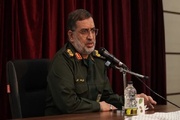

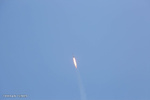
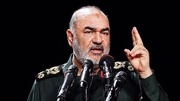
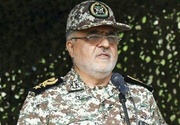

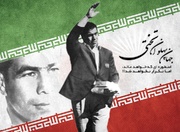
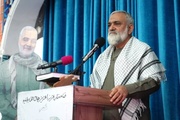
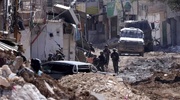








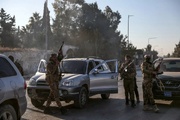

Your Comment